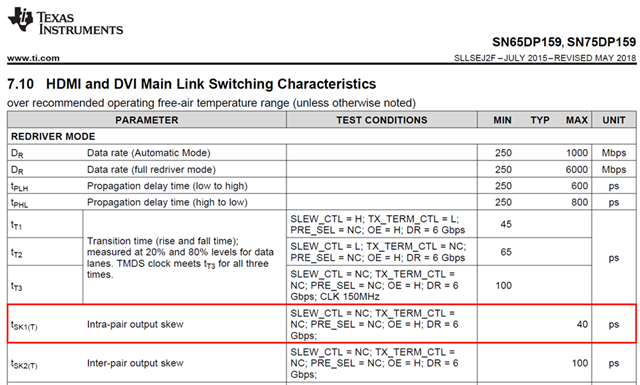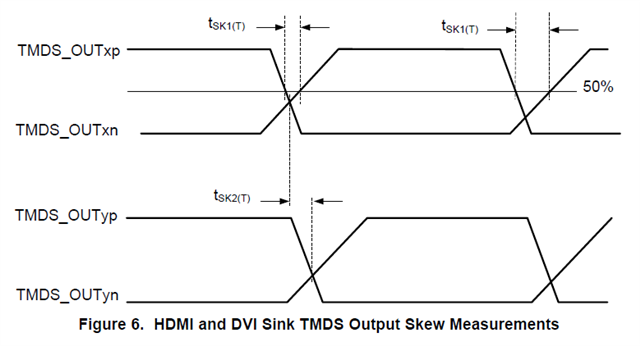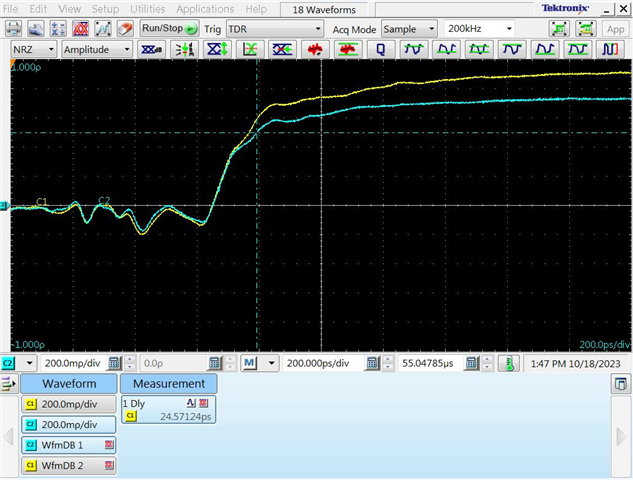Dear technical TI team,
I'm using the SN75DP159 HDMI2.0 redriver / retimer chip from TI in our product to implement an HDMI2.0 Transmitter interface. The HDMI2.0 interface is properly working so far, but unfortunatly we didn't passed the HDMI compliance test, which we have out-sourced to an external test house.So far all tests passed, except of the the test ID HF1-4. This test will measure the intra-pair-skew on each differential HMDI TMDS signal (1xClock + 3xData). The HDMI specification dictates a maximum intra-pair-skew of 25ps, which is a really small value. The results from our external test house exposed the following intra-pair-skews:
Clock = 38ps
Data 0 = 18ps
Data 1 = 17ps
Data 2 = 14ps
As you can see form those values, the intra-pair skew on the clock signal is too big, and exceeds the 25ps limit by roughly 13ps. Well the data signals does not exceed the limit, but nevertheless they are close to the max. limit of 25ps.
Well we have checked the PCB routing, and we can say that the maximum length difference between Clock+ and Clock- is less than 100um (almost no difference). When we assume a typical signal speed of 70ps/10mm, in a FR4 impedance matched PCB, 38ps would equal to more than 5mm signal length difference. Therefore a length difference of 100um, cannot be the cause for this issue.
Also the HDMI receiptacle does not introduce such a big intra-pair-skew. Further, Allion stated, that they have calibrated the measurement setup, which means that they have compensated any signal runtime differences between Clock+ and Clock-.
At the moment it looks like the excessive intra-pair-skew is caused by the SN75DP159. The interesting point here is, that the datasheet of the SN75DP159 says, that the maximum intra-pair-skew can be up to 40ps !!!
When I refer to picture below, than the Intra-Pair-Skew is defined as the absolute distance between the middle-line crossing points:
1Tbit equals to 1/6Gbits = 166.666ps. If I’m correct, the max Intra-Pair Skew must not exceed 0.15 * 166.666ps = 25ps.
So if I understand it correctly, the DP159 has a bigger tolerance (40ps), than the HDMI 2.0 specification (25ps) allows, and therewith the DP159 could not meet the requirements of the HDMI2.0 specification.
Can you confirm my thoughts, or am I wrong?
Kind regards
Steffen


